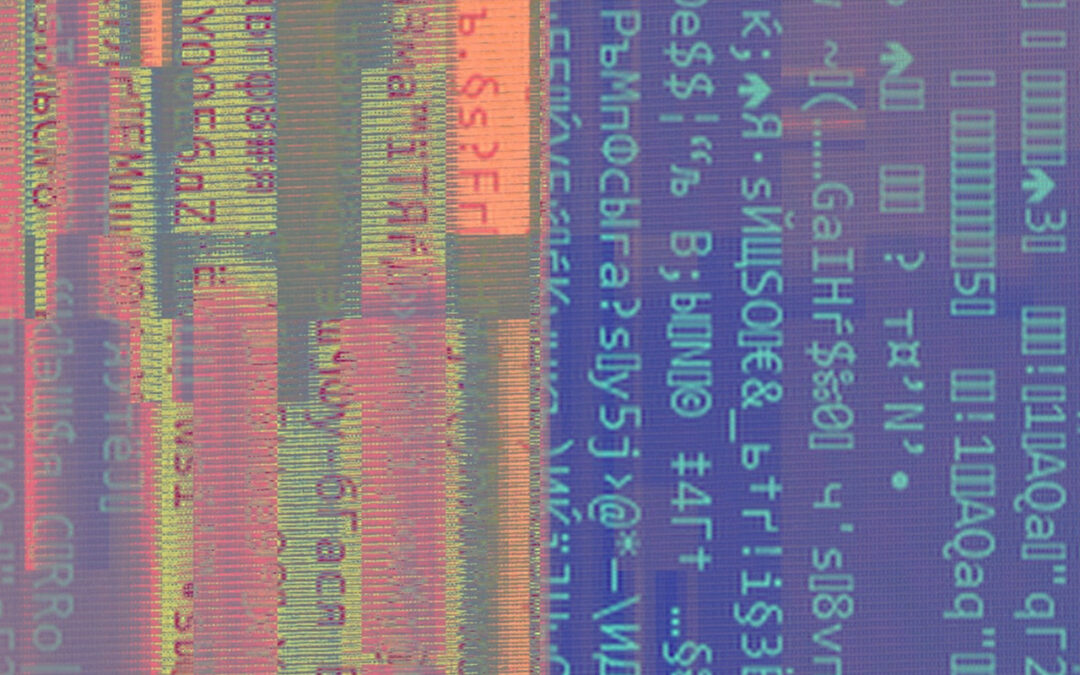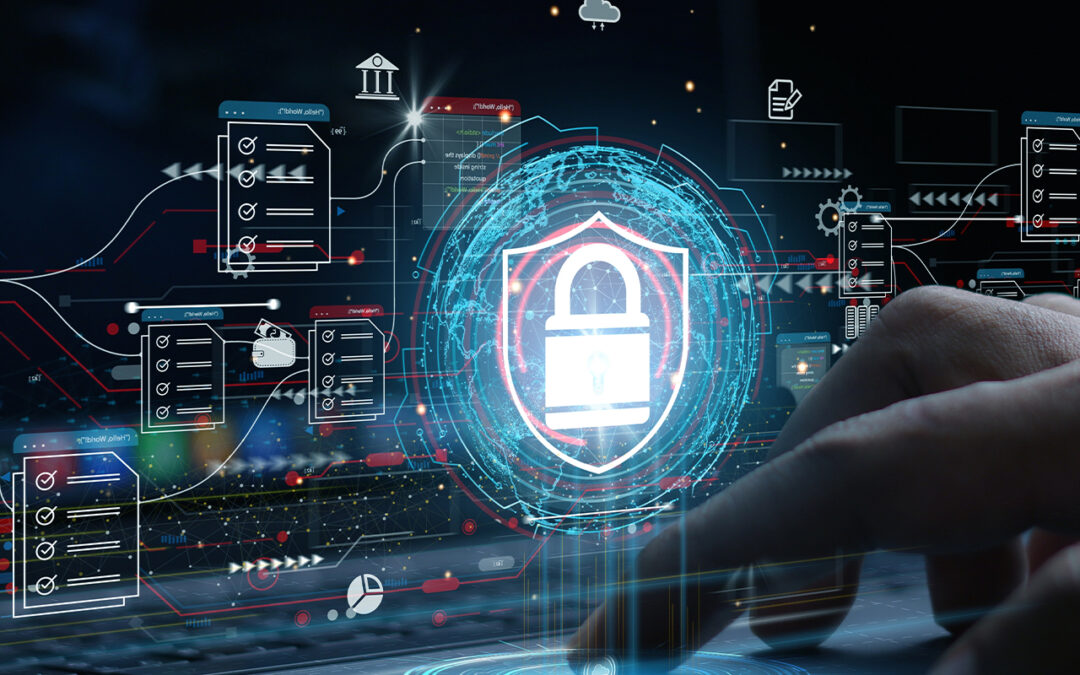
by Hannah Johnson | Dec 9, 2023 | Fraud Prevention
Are you under A.T.T.A.C.K?
Social manipulation, in the context of fraud, is the art of manipulating end users into providing personal or confidential information. Personal cyber-attacks come in many forms. Here are a few tips that can help you to spot them.
A – An Email
Phishing emails may look legitimate, but you should always question links, attachments, threads, or emails from someone unexpected.
T – Trick Websites
These are made to look like trusted websites but often have spelling or grammar errors or a slightly different URL. Farming the data from these trick websites allows criminals to gather personal details and record your keystrokes.
T -Text Messages
Social engineers will send you a text message about an urgent bill payment or some type of attractive offer. Also, beware of fake messages that appear to be from the government asking you to click a link to receive your rebate, return or payment. If you click these links on a mobile device message it could put your mobile phone at risk.
A – A Telephone Call
Fraudsters may call and say they are from Canada Revenue Agency, Canada Post or Microsoft, or maybe even your financial institution, and proceed to ask you to disclose personal information. Before going ahead with this, you need to ask yourself what valid reason would there be for you receiving the call and why would you provide those details if you didn’t initiate the call? If you still cannot determine the legitimacy of the caller, ask them to proceed via email because you cannot speak in depth at the moment.
C – Contest Winner
“Congratulations! You’ve won a big contest!” This message can come to you via email, text or phone. But did you even enter a contest? If not, it is more than likely an attempt by a fraudster to gather personal information from you. Do not fall for it!
K – Key Loggers
You’re browsing a familiar website and receive a pop-up of an offer that looks too good to be true! If you click the pop-up that social engineer may be trying to capture sensitive information.
When in doubt……..Hang up! Delete! Exit!
Social Engineering is on the rise. Watch for these signs of an attack and take these steps to protect yourself. Ask questions. Do not feel pressured into providing any information you may not be comfortable providing. Never share your ID, passwords, or any answers to your security questions. Use caution when entering sensitive information with websites that don’t begin with HTTPS or when something arrives that you were not expecting. Always remember to report anything suspicious.
YNCU members, if you know, or think you have been ATTACKED please contact our Service Excellence Centre at 1-800-413-YNCU (9628).
You can also contact the Canadian Anti-Fraud Call Center at 1-888-495-8501. Check out this video for more information on protecting yourself against a cyber-attack.

by Micaela Maki | Dec 1, 2023 | Fraud Prevention
THE FOUR CORNERSTONES OF INTERNET SECURITY
Friday, December 1, 2023
While the internet offers incredible opportunities and convenience, it also comes with its fair share of security dangers. These four cornerstones of internet safety can help you keep your information secure online.
Secure passwords
Always use secure passwords and never reuse old passwords. If criminals obtain your username and passwords from one site, they will try the same information on other popular sites using the same credentials. Never share your PIN and never share your online banking details.
Always type website log in addresses manually or use a safe bookmark
Never follow an email link to a log in page. It may be a phishing email page tricking you into logging into spoofed login page. It may look real but it’s not.
Financial information should be shared on secured home Wi-Fi Only
Assume that everything you do over public Wi-Fi is being watched, especially on mobile devices. If you need to conduct online financial transactions in a public setting always turn off Wi-Fi and turn on Cellular Data. Always assume that public Wi-Fi networks could be recording your actions.
Enable and install all updates and patches
Patches are software and operating system updates that address security vulnerabilities within a program or product. Updates for your mobile device and computer remove vulnerabilities and keep your identity and passwords protected.
Navigating the internet safely requires constant vigilance, adopting security best practices and staying informed about emerging threats.
If you know, or think you have been a victim of internet scams, phishing or cyber-attacks or your banking information has been compromised, contact your financial institution immediately and report it to local authorities.
You can also contact the Canadian Anti-Fraud Call Center at 1-888-495-8501.

by Hannah Johnson | Nov 9, 2023 | Fraud Prevention
Ransomware: You’ve been hacked!!
What is Ransomware?
Ransomware is software designed to deny or restrict access to your device or files until you pay. The general rule is don’t pay the ransom! There is no guarantee you will get access back, and paying increases the likelihood that you will be targeted again.
This tactic has been around for years and is on the rise. Often Ransomware targets places where the most sensitive data is stored – computer, network files, cloud or other storage locations etc
So what does it look like and how do you know you’ve been hacked??
There are two basic types of Ransomware:
Locker ransomware – completely locks out the device. The victim will receive a pop up indicating that they were caught doing something illegal and you have to pay a fine to regain access.
Crypto ransomware – encrypts files to restrict access. These encryptions are almost impossible to break.
If you have been hacked, what do you do?
Shut down your computer, disconnect any external media (phones, tablets, external hard drives) and bring it in to an authorized support center.
You can restore your files – as long as you’ve taken the correct steps to prepare ahead of time!
P – perform regular updates – you can set up auto updates to run in the evenings/during the day when you aren’t using your device.
R – require virus scan of external devices before using them
E – execute software only if its reputable
V – verify all emails/ texts etc before clicking links
E – external storage to back up!
N – never be without malware protection software & keep it up to date
T – trust your instincts and do a little online research if something feels off – often other victims may provide useful info online
Some interesting statistics:
On average, only about 65% stolen data is returned after the ransom is paid.
Nearly 30% of targets had less than HALF of their data returned.
Less than 10% of victims get all of the files returned.
Approximately 80% of Ransomware targets that paid the ransom were targeted a second time!
In 68% of cases that paid, that second hit occurred within the first month after paying, for a higher ransom.
North America saw an increase in ransomware attacks of 180% in 2021.
If you have been targeted by Ransomware Please reach out out to your YNCU branch team so we can help to protect you.
We will always be here to assist you! 1-800-413-YNCU (9628)

by Hannah Johnson | Oct 9, 2023 | Fraud Prevention
CRIME AND ABUSE AGAINST SENIORS
August 1, 2023
Seniors are one of the most commonly targeted demographics by fraudsters – we’re even seeing this play out in our own branches!
SOME IMPORTANT STATISTICS TO KNOW:
- About 10% of seniors are victims of crime per year.
- 4-5% of seniors report some form of abuse from ages 65 up.
- Financial abuse/exploitation and emotional abuse are the most prevalent.
- Overall rates of elder abuse are similar in Canada, Australia, US and UK
- Seniors are less likely to report abuse, and when they do, it’s often to health professionals, community groups, or their Financial Institution, not police.
When it comes to financial crimes, seniors are targeted in almost every way, including aggressive telemarketing, fraudulent home repairs, health or investment schemes, technology schemes, romance or urgent family schemes, just to name a few.
FACTORS THAT MAKE SENIORS AN APPEALING TARGET INCLUDE:
- Home ownership.
- A tendency not to seek advice before making a purchase.
- Financial risk-taking behaviours.
- Lack of knowledge of consumer rights.
- Lack of awareness of fraudulent schemes.
- Openness to marketing appeals.
- Reluctance to hang up the phone on telemarketers.
Perpetrators use a variety of tactics that may hit on many of these risk factors to gain compliance. They will often try to isolate the victim, pressure them to act quickly, use fear tactics, and discourage the victim from seeking outside advice.
STEPS YOU CAN TAKE TO PROTECT YOURSELF:
- BE SUSPICIOUS – Particularly of anything that shows up unexpectedly, including regular mail, emails, and messages through social media or text. Check email addresses and phone numbers, avoid clicking on pop ups or links in emails, and navigate to trusted sites by typing in the address rather than using a search.
- SLOW DOWN THE PROCESS – almost nothing will need an immediate response. You are allowed to take a step back and think about it, even for a few minutes, to ensure you’re not reacting out of fear or pressure. If you’re unsure, run it by a trusted loved one or your Financial Institution.
- PLAN AHEAD – ensure you have people you can trust set up to assist you when the time comes, making sure your wishes are clearly stated. Consider an advanced directive or Power of Attorney that can follow through on your instructions.
- ASK QUESTIONS – Does the scenario make sense? Are you familiar enough with the person/investment/scenario to make an educated decision? If you aren’t, run the situation by someone else before acting on it. It could be your advisor from YNCU or a trusted friend or family member, but a second opinion never hurts. If you’re being discouraged from seeking another opinion, this should be a red flag.
- KEEP UP TO DATE on active scams by reviewing the list of ongoing fraud tactics provided by The Canada Anti-Fraud Centre. They are explained in easy-to-understand terms and can give you a great idea of what to be on the lookout for.
If you would like to review the Crime and Abuse Against Seniors report from the government, click here or visit justice.gc.ca.

by Hannah Johnson | Oct 9, 2023 | Fraud Prevention
PROTECT YOUR ACCOUNT WHEN BANKING ONLINE
July 10, 2023
The number of people who regularly do some, or all, of their banking online is steadily increasing. With that increase comes increased risk, and with those risks we must work to protect ourselves from online predators. No one is invincible. Awareness and diligence are key factors needed to minimize risk your risk of fraud when banking online.
It’s important to protect yourself and your finances. Here are some tips to help you STAY DILIGENT:
D – Devices that are used to access your accounts online should be protected by a PIN. Always try your best to make it as difficult as possible for unauthorized users to gain access to your information.
I – Invest in a password manager to help you create strong passwords. Do NOT use the same password for more than one application or website. If a password is compromised, it creates an opportunity for fraudsters to access any accounts where that password is also used.
L – LOG OUT every time you finish your online banking. And, although the convenience is tempting, never save your username or password in your browser.
I – Issues can be detected early by regularly monitoring your accounts. Set automatic alerts for any bill payments, changes to bill payment vendors and e-transfers, as well as any changes to your passwords or personal information. This should also include any log-in attempts that are not yourself.
G – Guard against any unauthorized account access by using enhanced logins and multi-factor authentications, if available. Avoid the use of public Wi-Fi or computers when accessing your banking and financial information. Always try to use your own home internet or cellular data.
E – Engage in account transaction reviews and actively monitor your financial accounts. Frequent unknown small transactions might be the first sign of a hacker’s attack.
N – Never disclose your personal financial or login information to anyone. YNCU will never call, text, or email to ask for these types of personal details. Confirm the URL address when doing your online banking and always navigate to your banking website instead of clicking on a link that is sent to you.
T – Take the time to verify your anti-virus software is up to date on every device in your household. Web browsers and operating systems must have the most recent and up to date security patches in place to protect you and keep your account information safe.
At YNCU we care about our members, and we will always strive to help where we can. If you have any questions about how to safeguard your accounts, please feel free to reach out to our staff. We can help you set up alerts for new bill payments, make changes to existing bill payments, and manage your e-transfers. Remember to regularly change your passwords and always review your account transactions.
Protect your personal information and your finances by STAYING DILIGENT when banking online.
If you suspect you’re a victim of fraud, contact your Financial Institution immediately and report it to your local police. If you’re a YNCU member, contact our Service Excellence Centre at 1-888-413-YNCU at the first sign of fraud. Know that you are not alone. We are here to help!
You can also contact the Canadian Anti-Fraud Call Center at 1-888-495-8501.
Help us prevent fraud by sharing these tips to look out for with your friends and family!

by Hannah Johnson | Sep 9, 2023 | Fraud Prevention
PROTECTING YOURSELF WHEN THERE ARE NO RED FLAGS
June 1, 2023
PREVENTION IS BETTER THAN CURE – this includes preventing fraud even when there are no signs of it happening.
Privacy breaches can be a nightmare to deal with and have rippling effects across a person’s life. They are becoming more frequent as technology improves and knowledge spreads, but here are a few things you can do to prevent this from happening to you.
CHOOSE STRONG PASSWORDS AND CHANGE THEM REGULARLY.
When creating a password, avoid using names, important dates, and any other easily identifiable words. A combination of numbers, symbols, and three or four seemingly random words, like items you can see from your desk or out your window, make for those hard-to-crack passwords.
CHOOSE SECURITY QUESTIONS WISELY.
Choose questions that you will know the answer to but would be hard for even someone that knows you to guess. If you have a reliable memory, answers don’t necessarily have to be accurate to the question either.
SET UP DUAL AUTHENTICATION IF AVAILABLE.
SET UP ALERTS AND NOTIFICATIONS.
- Ensure notifications come into your phone and/or email to alert you when:
- Bill payments or e-transfers are made to know when money is moving out of your account.
- There is a new bill payee/e-transfer recipient.
- There is a recent login to let you know if someone else has logged in without your consent.
- There is a password, PAC or security question change.
EVEN IF YOU DO ALL THE RIGHT THINGS, UNFORTUNATELY YOU MAY STILL BE TARGETED.
IF YOU REALIZE YOUR ACCOUNTS HAVE BEEN COMPROMISED, HERE ARE SOME THINGS YOU SHOULD DO:
- First and foremost, stay calm!
- If you still have access to your accounts, change your password and security questions as soon as possible. If not, lock yourself out by typing in something other than your password 4 times.
- If you’re a YNCU member, contact our Service Excellence Centre at 1-888-413-YNCU, otherwise contact your Financial Institution to report it as soon as possible. If outside business house, leave a voicemail and follow up the next business day if you have not been contacted.
- Contact Equifax (1-800-465-7166) and Trans-union (1-800-663-9980) to inform them as well. • Report to the Police – especially if there has been a loss. • Report to the Canadian Anti-Fraud Centre (1-888-495-8501).
- Contact other authorities depending on what information
Click HERE for information on spotting the red flags of an online scam or watch this video from the Canadian Credit Union Association.
Know that you’re not alone. YNCU is here to help!
For expert advice, or even just a friendly ear when you need some financial guidance, reach out to your branch or book an appointment online.






